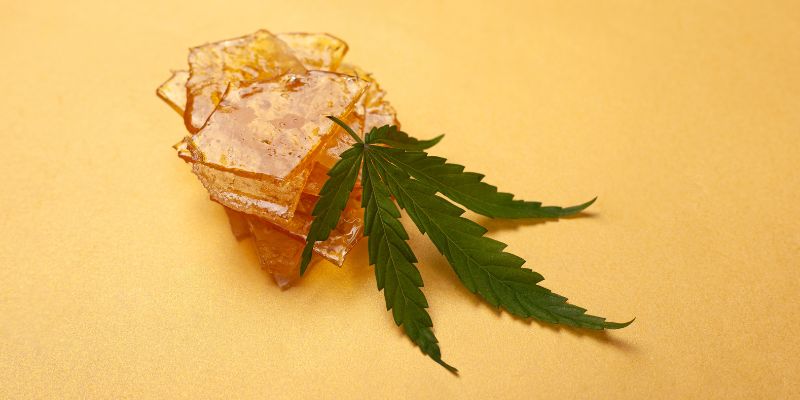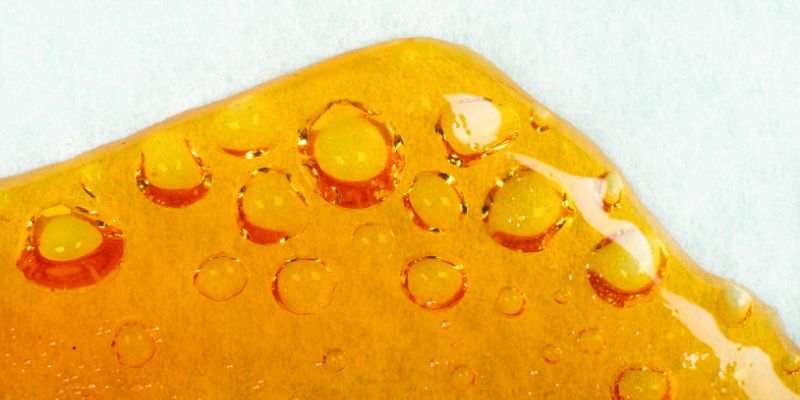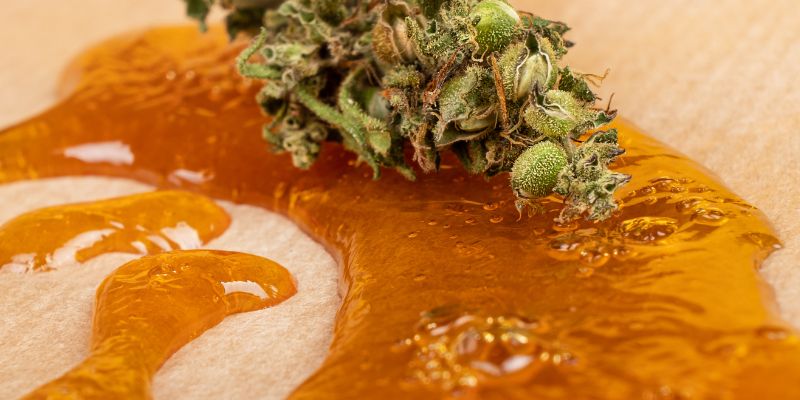
Recovery Reimagined: Using Cannabis for Post-Workout Muscle Recovery
In the pursuit of peak physical performance, the realm of fitness constantly seeks new avenues to optimize recovery and enhance muscle regeneration post workout. As

Cannabis distillate is a form of cannabis extract that has gained significant popularity in the cannabis industry. It is known for its exceptional purity and potency, making it a versatile option for both medical and recreational cannabis users.
One of the key features of cannabis distillate is its high level of purity. The distillation process allows for the removal of undesirable compounds, including plant matter, chlorophyll, waxes, and other contaminants, resulting in a clean and refined final product. This purity is especially important for medical cannabis applications, as it ensures a consistent and reliable dosage.
In addition to purity, cannabis distillate is also known for its potency. The extraction and distillation processes concentrate the cannabinoids, such as THC and CBD, making the distillate significantly stronger than traditional cannabis flower or other forms of cannabis extracts. This high potency makes distillate suitable for various consumption methods, including vaping, dabbing, and incorporating into edibles or topicals.
The versatility of cannabis distillate extends to its various applications. Medical cannabis patients may use it for pain management, epilepsy treatment, and symptom relief for various conditions. Recreational users often prefer distillate for its potent effects and convenience. Moreover, distillate can be incorporated into different products such as tinctures, cartridges for vape pens, concentrates, and edibles, offering consumers a wide range of consumption options.

Cannabis distillate is created through a process called distillation, which involves the extraction and refinement of cannabinoids and terpenes from the cannabis plant material. Distillation is a scientific technique that utilizes heat and different boiling points of compounds to separate and isolate them. In the case of cannabis distillate, the process begins with an initial extraction of cannabinoids and terpenes from the cannabis plant material using methods such as CO2 extraction or hydrocarbon extraction.
Once the initial extraction process is complete, the extracted oil is further purified and refined through a series of distillation steps. This typically involves subjecting the oil to high temperatures and vacuum conditions to evaporate and separate different components based on their boiling points.
The primary goal of cannabis distillation is to isolate and concentrate the desired cannabinoids, such as THC and CBD, while removing unwanted substances like plant matter, chlorophyll, waxes, and other impurities. This results in a highly purified and potent product that is significantly stronger than traditional cannabis flower or other forms of cannabis oil extracts.
One of the defining characteristics of cannabis distillate is its high level of purity. The distillation process allows for the removal of impurities, resulting in a clean and refined final product. This purity is crucial for medical cannabis applications, as it ensures a consistent and reliable dosage.
Another characteristic of cannabis distillate is its potency. The extraction and distillation processes concentrate the cannabinoids, making the distillate significantly stronger than other cannabis products. This high potency makes distillate suitable for various consumption methods, including vaping, dabbing, and incorporating into edibles or topicals.
In terms of physical properties, cannabis distillate is often colorless or light yellow in appearance. It is typically viscous or thick in consistency, resembling a dense oil. Distillate is known for its flavorless and odorless nature due to the removal of terpenes during the distillation process. However, manufacturers can reintroduce terpenes later to enhance the taste, aroma, and potential entourage effects.
Overall, cannabis distillate is prized for its purity, potency, and versatility. Its concentrated form and lack of noticeable taste or smell make it a preferred choice for both medical and recreational cannabis users, offering a wide range of applications and consumption options.

Extraction methods play a crucial role in the production of cannabis distillate, as they are responsible for extracting the desired cannabinoids and terpenes from the cannabis plant material. Here’s an overview of some popular techniques used in the industry:
Carbon dioxide (CO2) extraction is a widely utilized method known for its efficiency and ability to produce high-quality extracts. It involves using pressurized CO2 to extract cannabinoids and terpenes from the plant material. CO2 acts as a solvent under specific conditions, allowing for the selective extraction of desired cannabinoid compounds. The advantage of CO2 extraction is that it doesn’t leave behind residual solvents, resulting in a cleaner and safer final product.
Hydrocarbon extraction involves using hydrocarbon solvents such as butane, propane, or a blend of hydrocarbons to extract cannabinoids and terpenes. This method is favored for its high efficiency in extracting a wide range of compounds. Hydrocarbon extraction can be performed using closed-loop systems that ensure the safety and containment of the solvents. However, it requires expertise and careful control to minimize the risk of explosions and ensure the removal of residual solvents.
Ethanol extraction utilizes food-grade ethanol as a solvent to extract cannabinoids and terpenes from the cannabis plant material. It is a relatively safe and cost-effective method. Ethanol has the ability to extract a wide spectrum of compounds from cannabis oils, making it suitable for full-spectrum extracts. However, ethanol extraction may also extract unwanted chlorophyll and other plant constituents, which can affect the final product’s taste and color.
Rosin press extraction is a solventless method that involves applying heat and pressure to the cannabis plant material to extract cannabinoids and terpenes. This technique has gained popularity due to its simplicity and ability to produce high-quality extracts without the need for solvents. Rosin press extraction can be performed using specialized equipment, and the resulting resinous extract can be further processed to obtain cannabis distillate.
It’s important to note that the choice of extraction method depends on various factors, including desired end product, safety considerations, scalability, and regulatory requirements. Each method has its own advantages and considerations, and manufacturers carefully select the appropriate technique based on their specific needs and priorities. Proper extraction techniques are crucial for obtaining high-quality cannabis distillate that is pure, potent, and free from contaminants.
Decarboxylation is a crucial process in the production of THC and CBD in cannabis distillate. It is the chemical reaction that converts the inactive forms of these cannabinoids, known as THCA (tetrahydrocannabinolic acid) and CBDA (cannabidiolic acid), into their active and psychoactive forms.
In raw cannabis, the plant naturally produces THCA and CBDA, which do not have the same physiological effects as THC and CBD. These acidic forms are considered inactive because they do not readily interact with the body’s cannabinoid receptors.
During decarboxylation, heat is applied to the cannabis plant material or extract, causing a chemical reaction that removes a carboxyl group (-COOH) from the THCA and CBDA molecules. This process converts THCA into THC and CBDA into CBD, making them bioavailable and capable of interacting with the body’s endocannabinoid system.
The decarboxylation process typically occurs through exposure to heat, such as smoking, vaporization, or cooking. When cannabis is smoked or vaporized, the heat from the flame or heating element instantly decarboxylates the THCA and CBDA present, resulting in the immediate activation of THC and CBD.
In the production of cannabis distillate, decarboxylation is often a deliberate step in the refinement process. This ensures that the final product contains the desired levels of THC and CBD, which are more readily absorbed by the body and produce the desired effects. The distillation process itself typically involves applying heat, which further facilitates decarboxylation as the cannabinoids are refined and concentrated.
It’s important to note that decarboxylation can also occur naturally over time as cannabis plants are exposed to air, heat, and light. This is why dried and cured cannabis flower can have varying levels of THC and CBD compared to freshly harvested plant material.
The major cannabinoids found in cannabis distillate are THC (tetrahydrocannabinol) and CBD (cannabidiol). THC is the primary psychoactive compound in cannabis, responsible for the euphoric “high” associated with cannabis use. It interacts with the body’s endocannabinoid system, primarily the CB1 receptors, and can produce various effects, including relaxation, euphoria, increased appetite, and pain relief. CBD, on the other hand, is a non-psychoactive cannabinoid that has gained significant attention for its potential therapeutic properties. It interacts with both CB1 and CB2 receptors and is known for its anti-inflammatory, analgesic, anxiolytic (anti-anxiety), and neuroprotective effects. CBD is commonly used to alleviate symptoms associated with anxiety, chronic pain, inflammation, epilepsy, and various other conditions.
Terpenes are organic compounds that contribute to the aroma and flavor profiles of cannabis and other plants. In cannabis, terpenes play a crucial role in creating the distinctive smells and tastes associated with different strains. Beyond their sensory appeal, terpenes also interact synergistically with cannabinoids in what is known as the entourage effect. This effect suggests that the combination of cannabinoids and terpenes can enhance and modulate the therapeutic effects of cannabis. Different terpenes have unique properties and potential benefits. For example, some terpenes may have anti-inflammatory, analgesic, or calming effects. By influencing the overall experience and potential therapeutic benefits of cannabis, terpenes add depth and complexity to the entourage effect, contributing to the wide range of effects and applications seen in various cannabis strains.

Distillation plays a crucial role in the preservation and concentration of cannabinoids and terpenes in cannabis. Through the distillation process, cannabinoids and terpenes are separated from other components, such as plant matter and impurities, resulting in a highly refined and concentrated product. Distillation utilizes temperature and pressure control to evaporate and condense the desired compounds. The process allows for the preservation of cannabinoids and terpenes by minimizing thermal degradation and preserving their chemical integrity. Additionally, distillation enables the concentration of cannabinoids and terpenes, as volatile compounds are selectively captured and collected. This concentration enhances the potency and efficacy of the final product, allowing for precise dosing and formulation in various cannabis products. By carefully controlling the distillation parameters, producers can achieve a distillate with high cannabinoid and terpene content, ensuring the preservation and concentration of these valuable components.
In conclusion, cannabis distillate represents a highly refined and potent form of cannabis extract with a wide range of applications and benefits. Through advanced distillation techniques, cannabinoids and terpenes are separated, resulting in a pure and concentrated product. The medical applications of cannabis distillate, such as pain management, epilepsy treatment, and symptom relief, offer potential relief for patients seeking alternative therapeutic options. Additionally, the recreational uses of cannabis distillate provide consumers with potent effects and convenient consumption methods. However, safety considerations, adherence to regulations, and third-party lab testing are crucial to ensure consumer safety and product quality. As the cannabis industry continues to evolve, the development and utilization of cannabis distillate contribute to the advancement of cannabis research, innovation, and the overall understanding of this versatile plant.

In the pursuit of peak physical performance, the realm of fitness constantly seeks new avenues to optimize recovery and enhance muscle regeneration post workout. As

In recent years, a notable trend has emerged within the cannabis industry: celebrities stepping into the spotlight as entrepreneurs and advocates for cannabis legalization. From

Introduction Microdosing THC (Delta-9-tetrahydrocannabinol), the primary psychoactive compound in cannabis, represents a nuanced approach to cannabis consumption, gaining traction for its promise of reaping therapeutic

Introduction to Cannabis Legalization in Ireland In recent years, the global landscape of cannabis legalization has undergone a seismic shift, with countries across the world
Protected by the United States Agriculture Improvement Act of 2018
FDA DISCLAIMER The statements made regarding these products have not been evaluated by the Food and Drug Administration. The efficacy of these products has not been confirmed by FDA-approved research. These products are not intended to diagnose, treat, cure or prevent any disease. All information presented here is not meant as a substitute for or alternative to information from health care practitioners. Please consult your health care professional about potential interactions or other possible complications before using any product. The Federal Food, Drug, and Cosmetic Act require this notice.
Puro Cannagars, LLC. requires all clients to follow local and federal regulatory guidelines as it pertains with the use and distribution of Delta 8 and all components within Puro Cannagar products. Purchasing from Puro Cannagars constitutes as agreeing to conducting own due diligence on Puro Cannagar products, and following local and federal guidelines on resale, use, and distribution of said products. If it is found that clients are involved in illegal activity, Puro Cannagars, LLC reserves the right to discontinue service without notice.